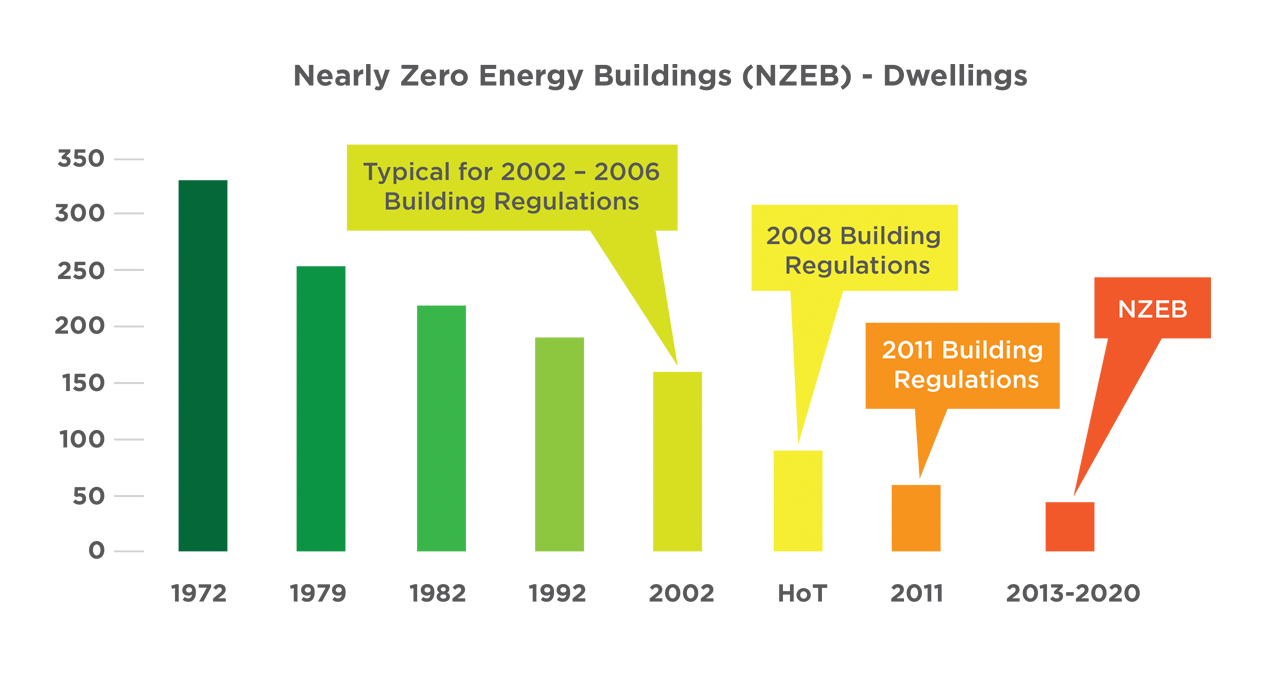NZEB
(NEARLY ZERO ENERGY BUILDINGS)
The European Energy Performance of Buildings Directive Recast (EPBD) requires all new buildings to be Nearly Zero Energy Buildings (NZEB) by 31st December 2020 and all buildings acquired by public bodies by 31st December 2018. This will mean that any building completed after 31st December 2020 must achieve the NZEB standard irrespective of when it was started
For public buildings the date is 31st December 2018. Any work for Public Authorities or any public building whether it be a school or a residential development will need to prove compliance to NZEB standard.
BUILDINGS OTHER THAN DWELLINGS:
To comply with the NZEB requirement, the Irish Government has now issued the revised Building Regulations Part L – Conservation of Fuel and Energy Buildings other than dwellings (and the accompanying Technical Guidance) for consultation. The revised regulations require buildings to use up to 60% less energy than under the current regulations, plus a requirement for up to 20% of this final demand to be met with renewables. However if a higher level of efficiency is achieved the renewables ratio may be reduced to 10% of the final demand. (Final demand does not include tenant equipment)
DWELLINGS:
To comply with the NZEB requirement, the Irish Government has issued the revised Building Regulations Part L – Conservation of Fuel and Energy – Dwellings. The revised documents states:
“In accordance with Directive 2010/31/EU of the European Parliament and the Council of 19 May 2010 on the energy performance of buildings (recast), all new dwellings will be nearly zero energy dwellings by 31 December 2020. The nearly zero or very low amount of energy required should be covered to a very significant extent by energy from renewable sources, including energy from renewable sources produced on-site or nearby”
The energy load for space heating, water heating, fixed lighting and ventilation are taken into account when calculating the efficiency of the dwelling. The required energy efficiency measures relate to a 20% improvement on the 2011 Part L revision building regulations.

